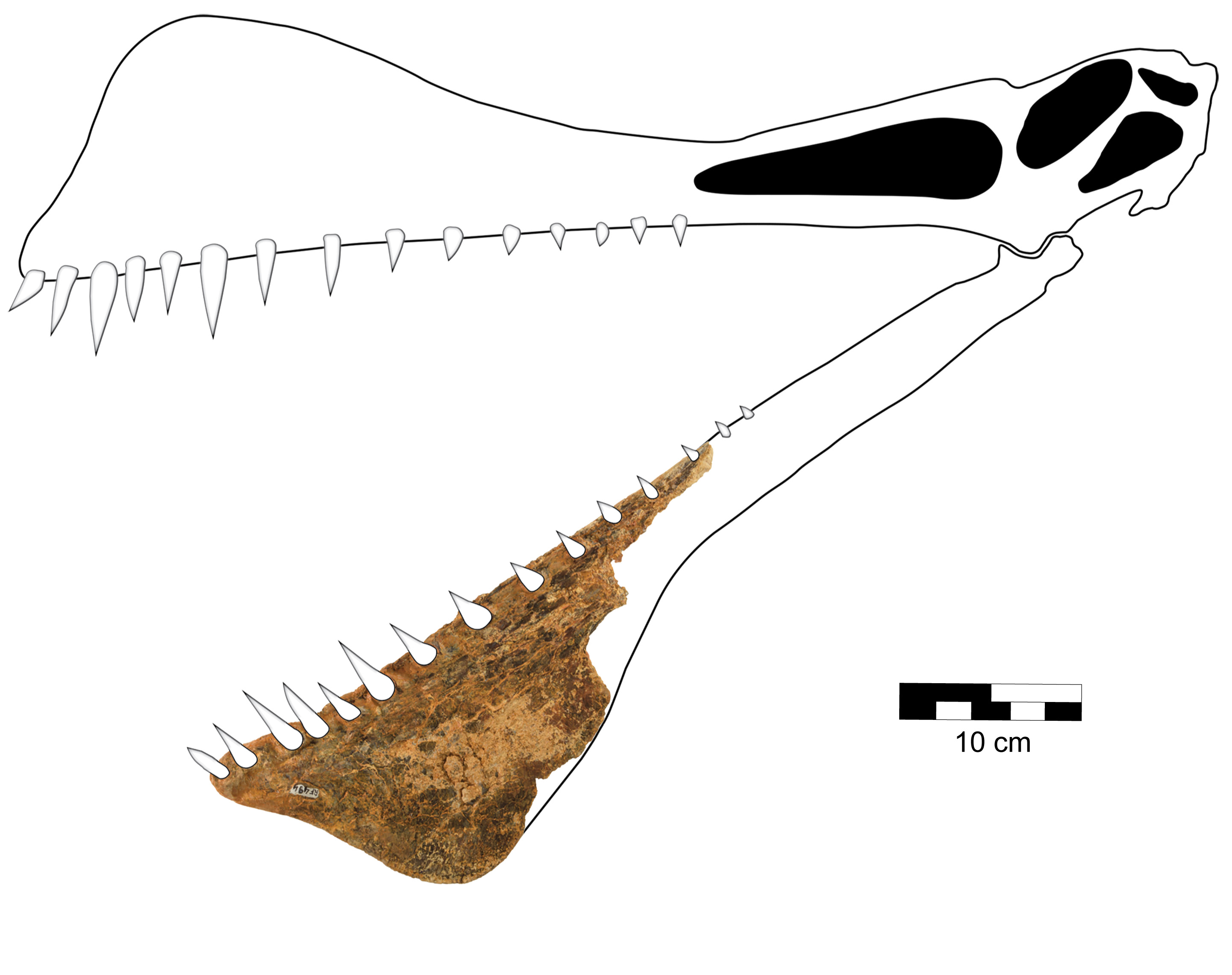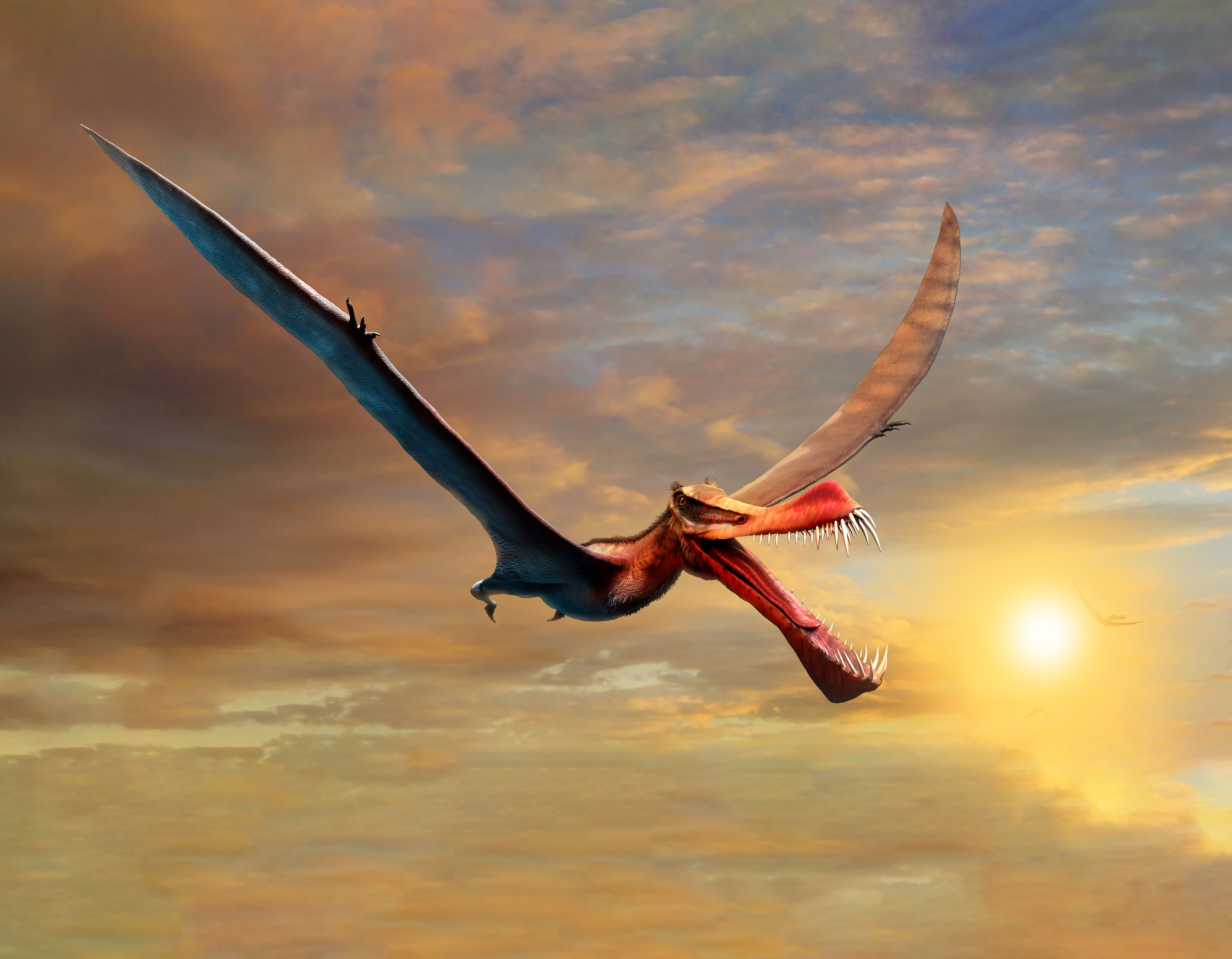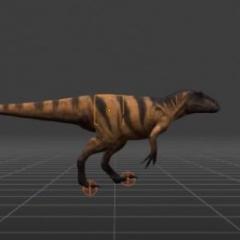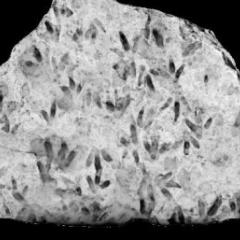Australia’s largest flying reptile has been uncovered, a pterosaur with an estimated seven-metre wingspan that soared like a dragon above the ancient, vast inland sea once covering much of outback Queensland.
University of Queensland PhD candidate Tim Richards, from the Dinosaur Lab in UQ’s School of Biological Sciences, led a research team that analysed a fossil of the creature’s jaw, discovered on Wanamara Country, near Richmond in North West Queensland.
“It’s the closest thing we have to a real life dragon,” Mr Richards said.
“The new pterosaur, which we named Thapunngaka shawi, would have been a fearsome beast, with a spear-like mouth and a wingspan around seven metres.
“It was essentially just a skull with a long neck, bolted on a pair of long wings.
“This thing would have been quite savage.
“It would have cast a great shadow over some quivering little dinosaur that wouldn’t have heard it until it was too late.”
Mr Richards said the skull alone would have been just over one metre long, containing around 40 teeth, perfectly suited to grasping the many fishes known to inhabit Queensland’s no-longer-existent Eromanga Sea.

"Even though pterosaurs could fly, they were nothing like birds, or even bats.
"Pterosaurs were a successful and diverse group of reptiles – the very first back-boned animals to master powered flight.”
The new species belonged to a group of pterosaurs known as anhanguerians, which inhabited every continent during the latter part of the Age of Dinosaurs.
Being perfectly adapted to powered flight, pterosaurs had thin-walled and relatively hollow bones.
Given these adaptations their fossilised remains are rare and often poorly preserved.
“It’s quite amazing fossils of these animals exist at all,” Mr Richards said.
“By world standards, the Australian pterosaur record is poor, but the discovery of Thapunngaka contributes greatly to our understanding of Australian pterosaur diversity.”
It is only the third species of anhanguerian pterosaur known from Australia, with all three species hailing from western Queensland.

Dr Steve Salisbury, co-author on the paper and Mr Richard’s PhD supervisor, said what was particularly striking about this new species of anhanguerian was the massive size of the bony crest on its lower jaw, which it presumably had on the upper jaw as well.
“These crests probably played a role in the flight dynamics of these creatures, and hopefully future research will deliver more definitive answers,” Dr Salisbury said.
The fossil was found in a quarry just northwest of Richmond in June 2011 by Len Shaw, a local fossicker who has been ‘scratching around’ in the area for decades. Paul Stumkat, a co-author of the new study and at the time the curator at Kronosaurus Korner, helped Len excavate the find. Paul later carried out the delicate preparation of the specimen at the museum prior to the study commencing.
The name of the new species honours the First Nations peoples of the Richmond area where the fossil was found, incorporating words from Wanamara, the language of that land.
“The genus name, Thapunngaka, incorporates thapun [ta-boon] and ngaka [nga-ga], the Wanamara words for ‘spear’ and ‘mouth’, respectively,” Dr Salisbury said.
“The species name, shawi, honours the fossil’s discoverer Len Shaw, so the name means ‘Shaw’s spear mouth’.”
The fossil of Thapunngaka shawi is on display at Kronosaurus Korner in Richmond.
Richards, T.M., Stumkat, P.E., Salisbury, S.W., 2021. A new species of crested pterosaur (Pterodactyloidea, Anhangueridae) from the Lower Cretaceous (upper Albian) of Richmond, North West Queensland, Australia. Journal of Vertebrate Paleontology e1946068, 1–14. (free PDF)
Read the UQ media release here
Media: Tim Richards, t.richards@uqconnect.edu.au, +61 408 977 616; Dr Steve Salisbury, s.salisbury@uq.edu.au, +61 407 788 660; Leonie Small, science.media@uq.edu.au, +61 415 231 092..



